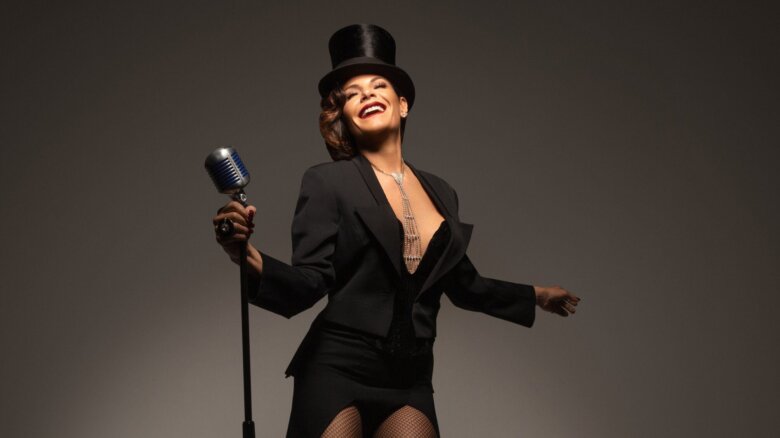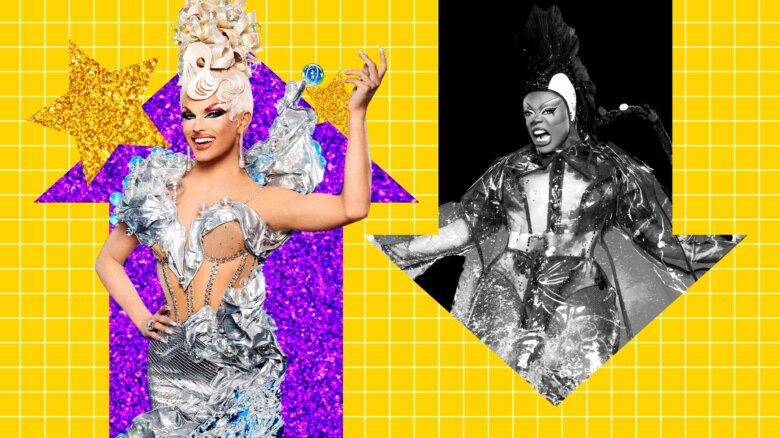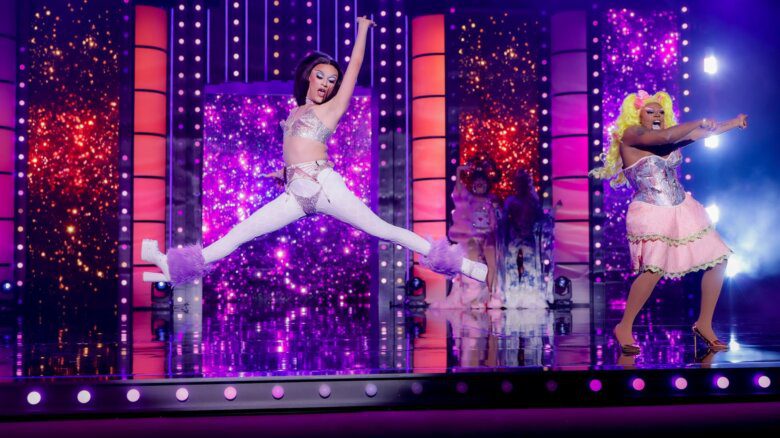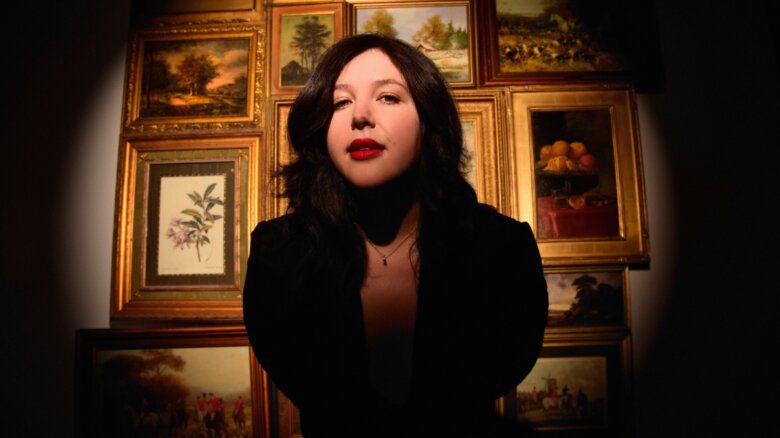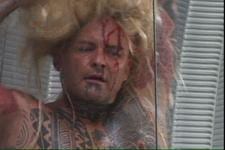
UNSETTLING. At the Oct 2 vernissage, some audience members quietly backed away from Ron Athey's performance, demurely retreating to Saw's front lawn while he was on stage. Credit: Self-Obliteration #1 Ecstatic by Ron Athey, 2007
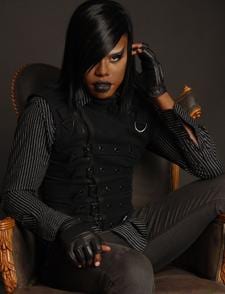
PROVOCATIVE. Artist M Lemar, a beautifully made-up, classically trained opera singer, composes operatic pieces that confront issues of race, gender and colonization. Credit: Courtesy of M Lamar
Tall and graceful, teetering ass-bare on platforms, Steven Cohen picks his way through the rubble of a South African shantytown. So white in his nakedness, heavy with makeup, he wears only a massive glittering chandelier.
The South-African activist is a brighter beacon than expected to be in a darker moment than he expected to find. The tin houses around him are being destroyed, aggressively dismantled by men with crowbars. A young woman, whose home might be next, takes his hand when he makes her smile, and calls him an angel.
Elsewhere, Mirha-Soleil Ross, a transwoman, dances through waves on a beach. Her movements, though graceful with joy, are edged with the unfamiliar weight of a pregnancy suit under her long dress. Her mother’s voice, running in subtitles along the screen, describes her own experience — the joy and surprise of her pregnancy so many years ago. With everything but the child, it is a poignant work of longing.
In Los Angeles, queer artist Ron Athey digs deep into his own pain. Seeking to expunge the torment of his childhood, he moves a needle hypnotically through his skin. The audience involuntarily recoils at the drops of his HIV positive blood. For him the moment is transcendent — a ritual cleansing — the audience as witness. The audience struggles to move past the their homophobia and fear.
They are three images from more than twenty artists whose work is exhibited at Saw Gallery in the sensational new show Radical Drag.
Tobaron Waxman is co-curator of Radical Drag, together with Ottawa’s Stefan St-Laurent. Waxman speaks slowly about the year-and-a-half process of conceptualizing and creating Radical Drag.
“Radical would not be a word I would usually use in describing art. But I think any time you pervert the norm and do it as a choice, it is considered radical. It’s this queer irony. In pulling the works together with Stefan, we went art first, premise second. In my case, it had to resonate with me.”
Pausing thoughtfully, Waxman considers the themes that link that the multi-media works and the diverse themes.
“We approached this curation through the artists and found these common threads. They are each directly dealing with issues of trauma — whether it’s race, class, war, colonialism, gender or sexuality. There is also this also a sense of abjection, which is found in most queer art. Abjection becomes a part of the healing, abjection becomes survival. In this case, drag is the process.”
Drag has been a respected artistic tradition in theatre and opera for centuries. Before women were accepted on the stage, drag was fostered out of necessity for Elizabethan theatre, evolving into a metaphorical tool for the pointed satire found in burlesque, and later more often, low-brow comedy.
Despite its history and cultural significance, popular culture’s embrace of drag has been simplified as a comedic queer subculture, not far removed from the karaoke performance.
But Radical Drag takes that patronising mainstream attitude to task, asserting drag as a seriously progressive art — and Saw Gallery presents it in a city not known pushing artistic boundaries. The exhibit demonstrates that drag has already has been reclaimed across the world, as an artistic genre, a process of healing and a form of intervention and social activism.
Pride is evident in curator Stefan St-Laurent’s voice.
“People don’t know that drag has already been radicalized. These are just a few of the artists that are doing it all around the world. It’s this very interesting, mutating practise.”
Waxman agrees, noting that the cultural significance is the foundation of Radical Drag.
“It is the artist’s job in society to address difficult things in a way that is resonant. The work that we chose here does that. It’s not about entertainment.”
Artist, Ron Athey can speak to that. His contribution to Radical Drag is a solo performance, seen on opening night, entitled Self-Obliteration #1: Ecstatic, which involves drag, a beautiful blonde wig, piercing and blood. Not too far removed from his earlier works, the piece is compelling, deeply symbolic and unforgettable.
Some would call it disturbing. At the Oct 2 vernissage, several audience members quietly backed away from his performance, demurely retreating to Saw’s front lawn.
Athey’s work is known for being extreme. Conservative art galleries have dismissed the dramatic shock value of his work, while queers artists and activists have acclaimed his intellectual pioneering performance art.
In a letter from New York, Athey argues for the deeper societal meaning to his works.
“Sometimes I think hard-to-stomach works are handily pathologized, which is lazy. There is a quote from Antonin Artaud that I particularly relate to: ‘Like the plague, the theatre has been created to drain abscesses collectively. The theatre, like the plague, is in the image of this carnage and this essential separation. It releases conflicts, disengages powers, liberates possibilities and if these possibilities and these powers are dark, it is the fault not of the plague nor of the theatre, but of life.'”
Athey has a dark and troubled past. The son of a schizophrenic mother, the grandchild of a fanatically religious grandmother, Athey was raised to become a Pentecostal minister. He was speaking tongues by the age of ten, a heroin addict by seventeen and a performance artist by twenty-three. Sadomasochism began early as revenge and repetition of crimes committed against him, later transforming into a healing, personal religion.
On his website Athey hints at his personal process within his art.
“Possibly through the catharsis of performance and ritual, we might finally be able to lay to rest the demons who’ve sent us in search of the respite that only a knife or needle could at one time provide.”
In his dress and long luscious wig, Athey forces his body to transcend its confines. By pushing the boundaries of his endurance and pain, he seeks freedom from the shackles of his body, his family, his religion, his gender, even his own blood.
In Athey’s case, carrying the stigma of being queer and HIV positive has been an additional weight. Anger clips his words when he talks about the presence of blood in his performances. Seeming irritated that it is so distracting from the art; he offers a dismissive distain at our fear.
“In the early ’80s when I used blood, blood was merely shocking for the violation. In the ’90s blood was HIV, whether or not that was the intent. And now, other than my incrimination at being known as a queer HIV-positive artist, blood is blood.”
Not all the works included in Radical Drag are quite as dark as Athey’s. St-Laurent and Waxman were aware they needed a balance of pieces, and with twenty different artists they were able to achieve a cohesive show with pieces like Athey’s at one end of the spectrum and the comedy at the other. In between are works of satire and homage.
In one corner of the gallery a collection of motorcycle helmets hang from the ceiling. Covered in sequence and googly-eyes, they are testosterone-charged disco-balls.
“Andrew Harwood’s work,” smiles St-Laurent, turning one around in his hand. “They’re all about glamming up the male chauvinistic myth.”
He turns and stands before another piece with a grin. It’s a site to behold — a luxurious, sexed-up full-size cloth mannequin.
“It’s a performance installation, an interactive textile piece by Virginia Puffpaint and Will Munro. And it has all these pillow insertibles. Aren’t they beautiful?”
That is the beauty of Radical Drag, the exhibit moves so seamlessly from colourful platforms and disco-balls to video art, blood and the transformation of pain, away to satin insertibles and giant sex toys.
St-Laurent nods thoughtfully, thinking over the impact of the huge spectrum of work.
“People do need to be affected. They have to expand their views on sexuality. If they are to take anything from the show I would hope that they would be inspired. That this show inspires them to express themselves in different and unusual ways. There is a personal process here. The artists are transformed, in a sense, through their art.”
Creative transformation is at the core of the work of musician M Lamar. A beautifully made-up classically trained opera singer, Lamar composes operatic falsetto pieces on the piano that confront issues of race, gender and colonization. His work is highly political but also highly personal.
In an interview from Brooklyn, New York, Lamar acknowledges that his art has been his lifeline, from a troubled childhood.
“For me, I would be dead if I wasn’t a performer. I would have killed myself, been killed or engaged in some action that would lead to a slow death. I have done a lot of therapy. But it doesn’t compare to art-making.”
Having spent his career creating from what he calls “a place of lack, loss and abandonment,” Lamar makes a subtle but deeply telling statement, looking in hindsight over his art.
“I only really felt love in my life in the last four years. I wondered if I would need art as much. I have found love to be as profound as art.”
For Lamar, art is the assumption, love is the unexpected. Lamar doesn’t speak about the success of his work, which has garnered much attention, but only how his art has transformed, even saved, his life.
It is the thread that connects all the pieces, a thread that St-Laurent and Waxman do not articulate. But the exhibit is a celebration of the power of drag, to transform and heal.
St-Laurent nod quietly. He gets it. And it’s clear he’s grateful to share these incredible works, with Ottawa’s artistic community.
“The works here are transformative in a so many ways. It’s such a profound, compelling collection. And I knew it would be. The one thing I didn’t anticipate though — I didn’t anticipate the way it would transform the community, the way it would get people excited about art. People are talking about this. That’s pretty exciting, maybe even the best part.”
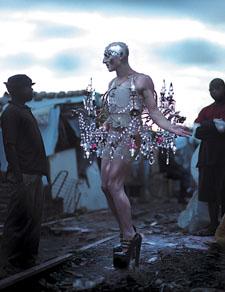
 Why you can trust Xtra
Why you can trust Xtra